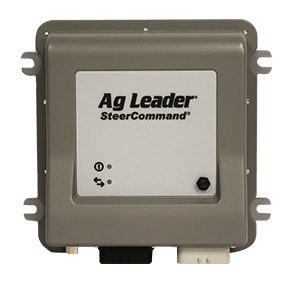Tips From Tech: Winterizing Your Ag Leader Investment
The time has come to winterize your equipment from the fall months of harvesting, tillage, and fall application. As the season comes to an end, it’s important to take care of your investments, whether it is harvested crops, machinery, or your precision equipment.
Harsh temperatures can lead to problems if the necessary precautions are not taken to keep your display in working order. Cleaning the touch screen of your display should be the first step you take in preparing for winter. When dust accumulates on the display it can cause damage to the touch screen. If you have a dirty screen, we recommend cleaning the screen by blowing the screen off using non-direct air. Also, you can use Windex or an electronic cleaner with a soft, non-abrasive cloth to wipe down the display screen. Most importantly, remember to never spray the screen directly with cleaner but instead spray the cloth used in your cleaning process. Finally, remove the display from the vehicle. The preferred place to store a display would be inside the house, in a dry location. A heated shop is also acceptable. Displays can be stored in a large Ziploc bag, or any other sealed container. We recommend this because it will keep unwanted moisture from causing damage to the display.
{image1}
Customers using yield monitoring systems, require a couple more steps before being completely ready for winter. Begin by cleaning out your EMU (Elevator Mount Unit) on your clean grain elevator. Pull out the two retaining pins located at the bottom of the EMU and thoroughly clean out the chamber inside remembering to check for any obstructions in front of the proximity switch.
{image3}
Removing the flow sensor mounted at the top of the clean grain elevator and placing it in a sealable container is strongly recommended. The reason we suggest this step is due to a soft protective potting material used on the load cell of your flow sensor which can be easily damaged by rodents. Rodent damage happens to flow sensors more than you think, so don’t let them get to the flow sensor. You should also run through the cabling located on your combine as suggested earlier to identify any issues you may have.
{image2}
When you begin season’s operations in 2014, you will want equipment to work properly from the start. It’s important to keep components in the same or better condition from when the end of the 2013 season. We can start by inspecting cabling for any areas of damage due to pinch points or corners near moving parts. Take preventative measures by zip-tying loose cabling, providing extra environmental protection to cabling with corrosion or look to replace any cabling that is no longer usable. Chemicals and fertilizers can be very harmful and damaging by causing corrosion to connectors and cabling. The final step would be to apply dielectric grease to terminals and contacts as you see fit.
Our last bit of information pertains to customers using YM 2000 monitors; it is extremely important to remember to remove the memory card while the display is off so it does not lead to corruption or dead batteries over time.
Taking time to properly winterize your equipment is well worth it. It will only take a few minutes and could add years of use, sustain performance, and save money.
Additionally, technical support will end weekend hours November 23 and will continue back to normal operating hours of:
Monday-Friday 7 a.m. to 7 p.m.
From everyone in technical support, we hope you have had a safe and successful fall!
















